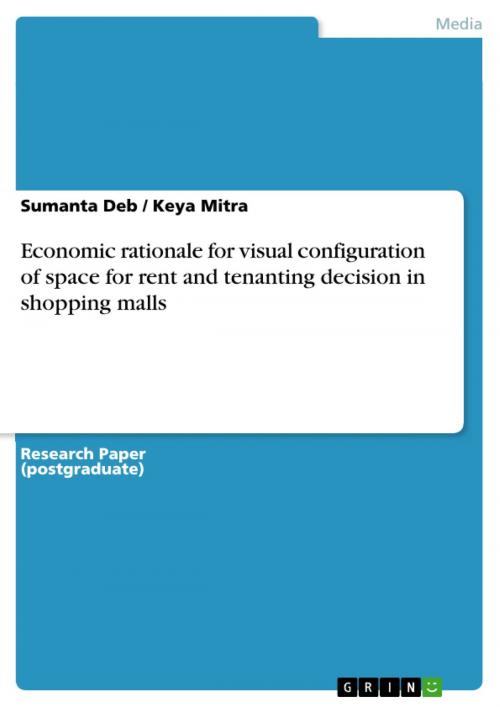Economic rationale for visual configuration of space for rent and tenanting decision in shopping malls
Nonfiction, Art & Architecture, Architecture| Author: | Sumanta Deb, Keya Mitra | ISBN: | 9783668367326 |
| Publisher: | GRIN Publishing | Publication: | December 21, 2016 |
| Imprint: | GRIN Publishing | Language: | English |
| Author: | Sumanta Deb, Keya Mitra |
| ISBN: | 9783668367326 |
| Publisher: | GRIN Publishing |
| Publication: | December 21, 2016 |
| Imprint: | GRIN Publishing |
| Language: | English |
Research Paper (postgraduate) from the year 2016 in the subject Art - Architecture / History of Construction, grade: 2.5, Indian Institute of Engineering Science and Technology, Shibpur (Indian Institute of Engineering Science and Technology), language: English, abstract: Organized retail formats are growing twice as fast as their traditional counterparts. But, in spite of that, the mall management is concerned about the rising rate of vacancy leading to economic unsustainability. The reason for high mall vacancy rates can be ascribed to faulty tenant placement and irrational rental plan. Existing studies on the tenant-mix-decisions focus more on inter store externality and not on the spatial logic. Moreover, normal industry practice follows rule-of-thumb instead of any scientific approach. A bid-rent model for profit maximization of individual stores is solved to identify the relationship between area allocation and rental decision with the customer density at that point. The customer density in turn depends on the accessibility and explained through visibility graph analysis and agent based simulation. The findings support the superiority of configurational characteristic over metric distances. A model for profit maximization of the entire shopping mall is proposed to explain the tenanting, rental and anchor rent subsidization decisions based on logic of spatial configuration. Space planning, in this way, can be considered as a tool for strategic decision making instead of an accommodator of functions.
Research Paper (postgraduate) from the year 2016 in the subject Art - Architecture / History of Construction, grade: 2.5, Indian Institute of Engineering Science and Technology, Shibpur (Indian Institute of Engineering Science and Technology), language: English, abstract: Organized retail formats are growing twice as fast as their traditional counterparts. But, in spite of that, the mall management is concerned about the rising rate of vacancy leading to economic unsustainability. The reason for high mall vacancy rates can be ascribed to faulty tenant placement and irrational rental plan. Existing studies on the tenant-mix-decisions focus more on inter store externality and not on the spatial logic. Moreover, normal industry practice follows rule-of-thumb instead of any scientific approach. A bid-rent model for profit maximization of individual stores is solved to identify the relationship between area allocation and rental decision with the customer density at that point. The customer density in turn depends on the accessibility and explained through visibility graph analysis and agent based simulation. The findings support the superiority of configurational characteristic over metric distances. A model for profit maximization of the entire shopping mall is proposed to explain the tenanting, rental and anchor rent subsidization decisions based on logic of spatial configuration. Space planning, in this way, can be considered as a tool for strategic decision making instead of an accommodator of functions.















